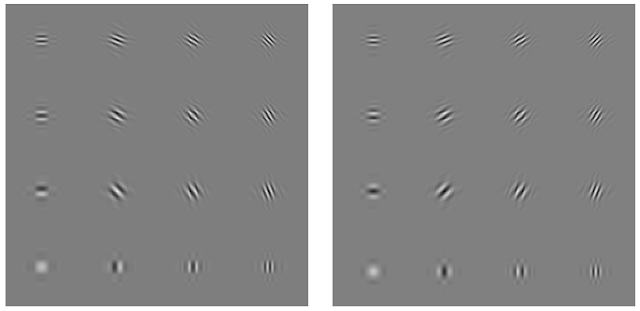It's being a lonng time: element 120 from the aperiodic table of wavelets is the trainlet, from Jeremias Sulam, Student Member, Boaz Ophir, Michael Zibulevsky, and Michael Elad, Trainlets: Dictionary Learning in High Dimensions:
Abstract: Sparse representations has shown to be a very powerful model for real world signals, and has enabled the development of applications with notable performance. Combined with the ability to learn a dictionary from signal examples, sparsity-inspired algorithms are often achieving state-of-the-art results in a wide variety of tasks. Yet, these methods have traditionally been restricted to small dimensions mainly due to the computational constraints that the dictionary learning problem entails. In the context of image processing, this implies handling small image patches. In this work we show how to efficiently handle bigger dimensions and go beyond the small patches in sparsity-based signal and image processing methods. We build our approach based on a new cropped wavelet decomposition, which enables a multi-scale analysis with virtually no border effects. We then employ this as the base dictionary within a double sparsity model to enable the training of adaptive dictionaries. To cope with the increase of training data, while at the same time improving the training performance, we present an Online Sparse Dictionary Learning (OSDL) algorithm to train this model effectively, enabling it to handle millions of examples. This work shows that dictionary learning can be up-scaled to tackle a new level of signal dimensions, obtaining large adaptable atoms that we call trainlets.They offer a base dictionary used within a double sparsity model to enable the training of adaptive dictionaries. The associated package is here, from Michael Elad software page. The cropped wavelet decomposition enables a multi-scale analysis with virtually no border effects. An entry to trainlets has added to WITS, the aperiodic table of wavelets.
But things always ends up with a song! Two of my favorite train songs, by Porcupine tree (Trains) and the Nits (The train).






